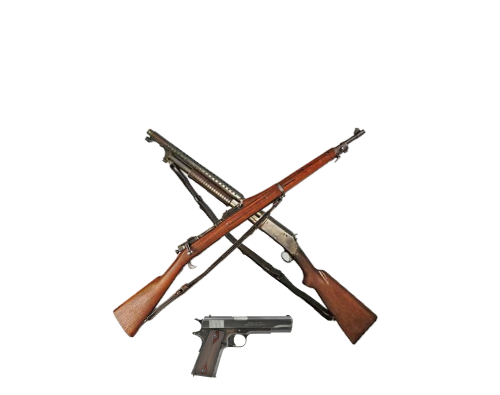Gentleman, not having studied the rules as much as I should have, a question popped up yesterday. A row of seven targets, one missed in the middle of the string. Would it be a procedural if you shot the next target and then come back and made up the miss? The stage was written as a sweep, not necessarily a round count.
The rules allow for most of those types of questions to be decided by the match director. We've played around with open round counts, and I like them a lot, but they do create a new challenge for stage writing. Probably the best option is to eliminate any sequences that must be shot in a specific order (use round counts instead of sweeps). The next best thing might be to decide how shots can be made up, and make sure all the shooters understand that decision before the match begins. I've been trying to use more round count type stages, and I think you can pretty much eliminate "sweeps" and other set sequences without reducing the quality of the match.
That said, in your scenario, my preference is for the shooter to make up the missed shot on the missed target before moving or changing firearms. Otherwise, the shooter can make up any missed shot any time they are able. This pretty much defeats the purpose of sweeps and similar sequences, but I suppose it still gives the shooters... something to aim for 😎 😎 😎
It can get tricky for spotters if shooters are bouncing all over the place making up hits on targets, but it helps a little if the spotters have no set expectation for how a shooter will engage the targets (as in a round count stage). That is, if the spotters don't know exactly what the shooter is going to do, they are probably paying more attention because they have to pay more attention so they don't miss a call.
I've been to matches where missed shots can be made up on any target appropriate to the firearm, but I don't like that as much for my matches. But that's the beauty of H3G. Every match is a little different, and I like that about it. I appreciate the challenge of conforming to rules/standards that differ from what I'm used to, and I think it helps build proficiency.
I agree with c.n. Double. The way to reengage targets is while the shooter is at that bank of targets as engaging R.O. Yells miss. Shooter reengages continues on. Most or a lot of times the shooter knows the miss and reengages right then. What isn’t done is the shooter leaving that bank of targets going to the next then wanting to return.
on an open round count stage if they reengage successfully then no miss, no penalties, it’s just standard operating procedures nothing special. In our rules there’s no overload penalty and there is no penalty for hitting a target to much with open round counts.
open round counts are the way to go! It’s as it should be. Stage writing for me is wide open. Much easier to write a great stage when you can move with a loaded gun and have an open round count. Granted the various sweeps are retired. We don’t need them . We have dynamic action to replace novelty prescribed sweeps. Sometimes less writing in stages is more. Just introducing 2 colors by making blue double taps and whites single changes and challenges without having a memory game. Engaging stages based on defensive shooting practices is logical and entertaining.
I've slowly been transitioning my stages over to round counts, and I'm pretty lazy, so I reuse a lot of stages. This month, I changed a couple of Nevada sweeps into round counts. It's still a little messy with the wording, but you can see examples of this on stage 2 (final pistol sequence) and stage 4 (position 3). You can find my stages for this month here on the OPSA monthly match thread in the Matches forum.
